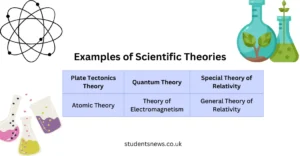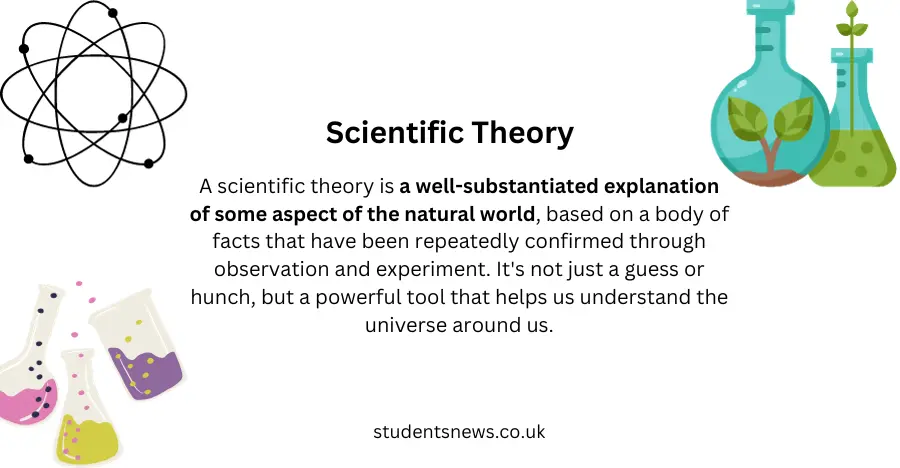Biology:
Biology is the scientific study of living organisms and their interactions with each other and their environments. It encompasses a wide range of topics, from the molecular mechanisms within cells to the ecology of entire ecosystems. Biology seeks to understand the structure, function, growth, evolution, and distribution of living organisms. It is a diverse and dynamic field that plays a crucial role in advancing our understanding of life on Earth.
What are Theories:

Biological theories are conceptual frameworks or systematic explanations that describe and interpret various aspects of living organisms and the natural world. These theories are developed through scientific observation, experimentation, and analysis of biological phenomena. They provide a foundation for understanding the fundamental principles that govern life, evolution, genetics, ecology, and other aspects of biology. Biological theories are essential for organizing knowledge, making predictions, and guiding further research in the field. Examples include the cell theory, evolutionary theory, and the germ theory of disease, each offering insights into different facets of biological processes and relationships.
Here is a list of 40 Biological Theories
| Cell Theory | Gene Theory | Neutral Theory of Molecular Evolution |
| Evolutionary Theory | Mendelian Genetics | Quantum Evolution |
| Endosymbiotic Theory | Theory of Natural Selection | Oxygen Revolution |
| Germ Theory of Disease | Central Dogma of Molecular Biology | Phylogenetic Systematics (Cladistics) |
| Homeostasis | Lamarckian Evolution | DNA Replication |
| Biogeography | Autotrophy and Heterotrophy | RNA World Hypothesis |
| Ecological Succession | Red Queen Hypothesis | Gaia Hypothesis |
| Hierarchy of Life | Kin Selection | Metabolic Theory of Ecology |
| Lamarckian Evolution | Punctuated Equilibrium | Symbiosis |
| Allopatric Speciation | Sympatric Speciation | Neoteny |
| Evo-Devo | Neutral Theory of Molecular Evolution | Community Ecology |
| Quantum Evolution | Oxygen Revolution | Resource Partitioning |
| Phylogenetic Systematics | DNA Replication | Niches |
| RNA World Hypothesis | Gaia Hypothesis | Chemiosmotic Theory |
| Gaia Hypothesis | Metabolic Theory of Ecology | Apoptosis (Programmed Cell Death) |
| Symbiosis | Neoteny | Antibiotic Resistance Evolution |
| Community Ecology | Resource Partitioning | Biological Clocks |
| Niches | Chemiosmotic Theory | Virus Evolution |
| Troajn Gene Hypothesis |
- Cell Theory: All living organisms are composed of cells, the basic structural and functional units of life, and all cells come from pre-existing cells.
- Evolutionary Theory: Species evolve over time through the process of natural selection, with common descent among all living organisms.
- Gene Theory: Genes are the units of heredity, passed from parents to offspring, and the genetic information is carried in DNA.
- Mendelian Genetics: Inheritance of traits follows specific patterns determined by genes located on chromosomes.
- Theory of Natural Selection: Variations within populations contribute to differential survival and reproduction, leading to the adaptation of species to their environment.
- Endosymbiotic Theory: Eukaryotic cells evolved through the symbiosis of different prokaryotic cells.
- Germ Theory of Disease: Many diseases are caused by microorganisms, including bacteria, viruses, and fungi.
- Central Dogma of Molecular Biology: Genetic information flows from DNA to RNA to proteins.
- Homeostasis: Living organisms maintain a stable internal environment to ensure proper physiological functioning.
- Biogeography: The study of the distribution of species and ecosystems in geographic space and through geological time.
- Ecological Succession: The process by which ecosystems change and develop over time in response to environmental factors.
- Hierarchy of Life: Living organisms are organized into hierarchical levels, from atoms and molecules to ecosystems and the biosphere.
- Lamarckian Evolution: Though not widely accepted today, Lamarck proposed the idea of the inheritance of acquired traits, suggesting that organisms can pass on traits acquired during their lifetime.
- Autotrophy and Heterotrophy: Organisms can be classified based on their ability to produce their own food (autotrophy) or rely on external sources (heterotrophy).
- Red Queen Hypothesis: Organisms must constantly adapt and evolve to maintain their relative fitness in the face of ever-changing biotic interactions.
- Kin Selection: Evolutionary strategy where individuals increase their genetic success by helping relatives, often seen in social behaviors.
- Punctuated Equilibrium: Evolutionary changes occur in short bursts of rapid change, interspersed with longer periods of stability.
- Allopatric Speciation: New species arise due to geographic isolation, preventing gene flow between populations.
- Sympatric Speciation: New species arise within the same geographic area, often due to ecological or behavioral factors.
- Evo-Devo (Evolutionary Developmental Biology): Studies the relationship between evolution and the development of organisms.
- Neutral Theory of Molecular Evolution: Molecular changes at the genetic level are primarily due to random drift rather than natural selection.
- Quantum Evolution: Suggests that major evolutionary changes can occur suddenly and unpredictably.
- Oxygen Revolution: The appearance of oxygen in the Earth’s atmosphere, leading to the evolution of aerobic respiration.
- Phylogenetic Systematics (Cladistics): Classifying organisms based on evolutionary relationships using shared characteristics.
- DNA Replication: The process by which DNA makes an identical copy of itself during cell division.
- RNA World Hypothesis: Proposes that self-replicating ribonucleic acid (RNA) molecules were precursors to current life forms.
- Gaia Hypothesis: Suggests that Earth’s biosphere and physical components are interconnected and regulate environmental conditions.
- Metabolic Theory of Ecology: Examines the relationship between metabolic rate and ecological patterns and processes.
- Symbiosis: Interaction between different species living in close physical association, often mutually beneficial.
- Neoteny: Retention of juvenile features in the adult stage of an organism, influencing evolutionary development.
- Community Ecology: Studies the interactions among species within a biological community and their effects on ecosystem structure.
- Resource Partitioning: Different species evolve to use different resources in the same environment to reduce competition.
- Niches: The role or function of an organism or species within an ecosystem.
- Chemiosmotic Theory: Explains the movement of ions across biological membranes and its role in cellular energy production.
- Apoptosis (Programmed Cell Death): Genetically regulated cell death crucial for development, tissue homeostasis, and immune response.
- Antibiotic Resistance Evolution: The adaptation of bacteria and other microorganisms to resist the effects of antibiotics.
- Community Succession: The sequential replacement of species in a community over time.
- Biological Clocks: Internal mechanisms that regulate the timing of biological processes in organisms.
- Virus Evolution: The continuous genetic changes in viruses, influencing their ability to infect hosts.
- Trojan Gene Hypothesis: Proposes that certain genes, even if harmful, can spread in populations due to selfish genetic elements.


